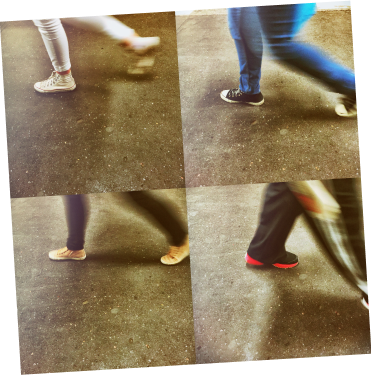First thing’s first, Studio Veld designs for people, not users.
People arrive at their device with different physical shapes, abilities and intentions which means that designing exceptional user experiences (UX) can never be a one-size-fits-all process. It’s also the reason that most website builds require multiple user journeys.
What we want most is that people (aka users) have an online experience that fulfills their needs, is inclusive, intuitive, adaptive and, dare we say it, enjoyable. The nirvana for crafting effective multiple pathways is when technical expertise meets empathy and awareness.
Here’s one approach.
Step 1: Understand ALL of your users
The first step in designing for multiple user journeys is building a deep understanding of your audience. How you do this depends on the project budget and your client’s commitment to participate. If you're lucky they may have already done some of this work.
1. User Research: Can include surveys, interviews, observation and analytics, to uncover insights about people’s needs and goals. This can be done, even on a low budget - a few important questions for you (or the client) to ask their customers.
2. Persona Development: Create detailed personas or archetypes representing key user groups. You can use personas to highlight the differences between people’s motivations, skill levels, and challenges. You’ll need your client to participate in this session.
3. Contextual Inquiry: Understand where, when, and how people interact with the product. This might mean exploring their physical environment or the devices they use. Or, on a low budget, use your imagination - put yourself in their shoes.
And always remember to think about a diverse range of people - check your bias at the door.
Step 2: Define user journeys
A user journey maps out the steps users take to achieve their goals while interacting with your website. For multiple journeys, this process involves identifying key paths for different personas and their specific needs.
1. Map goals and objectives: What is each person trying to achieve? Define clear outcomes for each journey.
2. Plot touchpoints: Outline all the interactions that people have with your product, from the first touchpoint to their ultimate goal.
3. Identify pain points: At each stage, determine where they might experience friction. Hunting for friction is a great way to ensure a smooth online experience.
4. Account for variability: Understand that not all people will follow a linear path. Some people are zig-zaggers.
Step 3: Challenge assumptions and recognise bias
This is our favourite - it’s where the magic happens.
Sometimes our assumptions can influence the decisions we make without us realising it. Bias, both conscious and unconscious, can creep in and lead to designs that exclude people who don’t sit in our idea of the ‘normal’ group.
1. Test your assumptions: If you have the project budget, conduct usability testing with real people who represent your personas. On a skinny little project budget, you’ll have to read, read, read best practice for identified groups, and put your imagination and empathy hat on. Sit quietly and think about what it would be like to be that persona.
2. Collaborate across perspectives: Involve a diverse team in the design process to spot blind spots and biases. Diversity in design leads to better solutions.
3. Question the norms: Beware of the normative. So much in our society is built for the big, middle normal group. Only rely on industry standards when you are also considering how they apply to your people. What works for one group might not work for another.
4. Beware of “default” thinking: In this process, default is just another word for normative. Who are you assuming your default user is? Design with inclusivity in mind, making sure accessibility and equity are built into every journey.
Step 4: Create adaptive experiences
Once you’ve mapped out the various user journeys, the challenge is to create a cohesive UX that feels seamless for all users, regardless of their path.
1. Prioritise flexibility: Build interfaces that adapt to different user needs and contexts. For example, novice users may require guidance, while experienced users often prefer shortcuts.
2. Design for choice: Allow users to take control of their journey by offering multiple ways to achieve the same thing. Clear navigation and intuitive workflows are key.
3. Test, iterate, repeat: Continuously test your product with a wide range of users and iterate based on their feedback. You can’t create good UX without testing.
Step 5: Measure success
Start with a clear and measurable idea of what success looks like. When you test against this, you know when it’s time to adapt and change.
1. Use analytics: Track user (people) behaviour and identify where people are dropping off or encountering friction. They’ll often do things that no amount of user research can predict.
2. Collect feedback: Build in ways for users to share their experiences, whether through surveys, in-app prompts, or direct outreach.
3. Regular audits: Periodically revisit your user journeys and evaluate whether they still align with evolving needs and behaviours of your people.
The human side of UX
It feels like the minute we started calling people who use digital platforms ‘users’ we lost sight, as a society, of why we were building some of this tech.
Exceptional UX requires a commitment to inclusivity. And committing to inclusivity asks us to recognise our own conscious and unconscious biases. To ask for diverse perspectives and really listen to the answers.
We need to be asking what is good, healthy and humane for the people who will be using this platform, application, website. We need to be confident enough to recognise that building good things for humans will benefit our clients as well.




